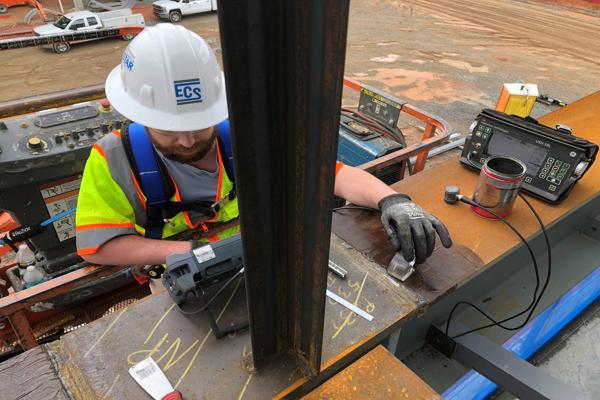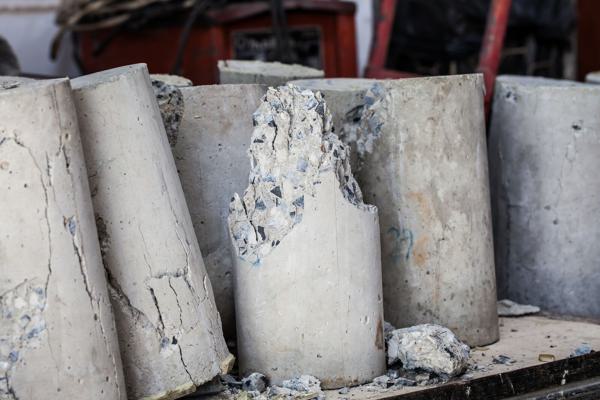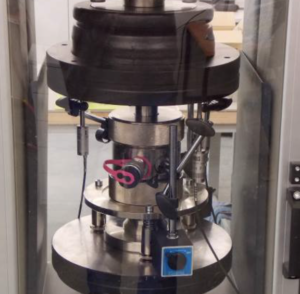What Are the Latest Trends in Building Material Testing?
In the fast-evolving world of construction, building material testing1 is undergoing a quiet revolution. From the rise of smart labs2 to the push for eco-conscious practices3, today’s testing methods are becoming more accurate, efficient, and sustainable than ever. So, what’s new in the world of material testing? Let’s break down the most exciting trends shaping the future of this essential field.
Innovative Technologies Transforming Building Material Testing
Modern laboratories are integrating cutting-edge technologies4 to make testing faster, smarter, and more insightful. Gone are the days of relying solely on manual measurements—automation and AI are stepping in5.
Key Innovations:
- AI-driven image analysis for microstructure detection in concrete and asphalt.
- 3D scanning and X-ray CT to detect internal voids and fractures non-destructively.
- Robotic sample handling for high-throughput, repetitive testing tasks.
- Smart sensors embedded in materials for real-time strength and moisture monitoring.
| Technology | Application |
|---|---|
| X-ray Computed Tomography | Internal defect mapping in concrete cores |
| AI Image Recognition | Automated crack and surface flaw detection |
| Ultrasonic Pulse Velocity | Non-invasive measurement of material homogeneity |
| Smart Embedded Sensors | Live performance tracking in structures |
These tools not only improve test precision—they also reduce turnaround time and human error in results.

Emerging Standards and Regulations in Building Material Testing
As materials become more complex and safety demands grow, international standards are adapting to meet new challenges6. Organizations like ASTM, ISO, and EN are updating protocols to include novel materials and performance-based testing7.
Notable Trends:
- Performance-based specifications over prescriptive ones.
- Inclusion of recycled and bio-based materials in testing frameworks.
- Greater emphasis on lifecycle testing and environmental durability.
- Harmonization of standards for global construction projects.
| Standard/Update | Focus |
|---|---|
| ASTM C1856 | Performance of Ultra-High Performance Concrete |
| ISO 21931 | Sustainability of building materials |
| EN 206 Amendments | Durability testing under climate change |
Keeping up with these evolving standards is critical for manufacturers and labs looking to stay compliant and competitive.

The Rise of Sustainable Building Material Testing Methods
With global pressure to reduce carbon footprints, material testing8 is playing a new role in sustainability. Labs are now evaluating recyclability9, embodied energy, and biodegradability10 alongside traditional strength and durability.
Sustainable Testing Trends:
- Carbon footprint analysis as part of material lifecycle testing.
- Durability under low-impact conditions, like passive building climates.
- Eco-toxicity and leaching tests for recycled concrete or fly ash.
- Rapid degradation assessment for compostable building materials.
| Test Focus | Purpose |
|---|---|
| Embodied Energy Testing | Evaluates the energy required to produce |
| Leaching Toxicity | Ensures safe usage of recycled aggregates |
| Life Cycle Durability | Predicts how green materials age over time |
This shift helps manufacturers and builders balance performance with environmental responsibility.

Future Outlook for Digitalization in Building Material Testing
Digital transformation is no longer optional—it’s reshaping how we store, analyze, and share test results. The future of building material testing lies in cloud-based platforms, digital twins, and real-time dashboards.
Digital Trends on the Horizon:
- Cloud-based lab data systems for global access and collaboration.
- Digital twin models that simulate material behavior using real test data.
- Blockchain-based certification for secure tracking of test histories.
- IoT-linked equipment that feeds real-time data directly into analysis platforms.
| Digital Tool | Benefit |
|---|---|
| Cloud Lab Management | Faster reporting and centralized records |
| IoT Integration | Continuous monitoring and predictive alerts |
| AI-Assisted Interpretation | Automated flagging of anomalies |
| Blockchain Certification | Transparent and tamper-proof documentation |
Together, these tools will enhance traceability, repeatability, and decision-making—pushing labs into a smarter, more connected future.

Conclusion
From AI to sustainability, the landscape of building material testing is changing fast. Whether you’re a lab technician, project engineer, or material supplier, staying ahead of these trends means not just meeting today’s expectations—but building for tomorrow’s demands. The future of testing is faster, smarter, and greener—and it’s already here.
-
Explore the latest advancements in building material testing to understand how innovations are shaping the construction industry. ↩
-
Discover how smart labs are revolutionizing building material testing, enhancing accuracy and efficiency in the construction sector. ↩
-
Learn about eco-conscious practices in building material testing and their impact on sustainability in construction. ↩
-
Explore this link to understand how cutting-edge technologies are revolutionizing laboratory testing and improving efficiency. ↩
-
Discover how automation and AI are enhancing laboratory processes, making them faster and more accurate. ↩
-
Explore how international standards are evolving to address modern complexities and safety demands in various industries. ↩
-
Learn about the importance of integrating novel materials and performance-based testing in ensuring safety and compliance. ↩
-
Understanding the role of material testing can help you grasp its impact on sustainable practices and innovations. ↩
-
Exploring recyclability will provide insights into how materials can be reused, reducing waste and promoting sustainability. ↩
-
Learning about biodegradability is crucial for understanding how materials can minimize environmental impact and enhance sustainability. ↩







